Deleted
Deleted Member
Member since January 1970
Posts: 0
|
Post by Deleted on Sept 3, 2017 16:12:46 GMT -5
I once had a precious tarantula for years. She moulted a few times, never saw it. One occasion I came home late at night and she was on her back! I was devastated (as a kid I liked tarantulas a lot and she was gorgeous!). Went to bed figured I would deal with it in the morning. I woke up to a bright new spider and a shed skin. They flip on their back! Well, that's a small water spider soon to be large. Is the shedding process due to growth ? I must have caught the buggar in the act. Pants down lol. Why don't we get knew skin ? Yeah, their shell is rigid so when they mature and the shell is full, they moult and stretch bigger. Lather rinse repeat until adult. Even adults moult once ahead or so. We are getting new skin all the time. Shedding skin cells continuously "dander". The hard part is when we drop a bunch of body fat the skin doesn't shrink so well. Please don't ask me how I know. Ughhh |
|
jamesp
Cave Dweller 
Member since October 2012
Posts: 36,607
|
Post by jamesp on Sept 3, 2017 16:57:13 GMT -5
Well, that's a small water spider soon to be large. Is the shedding process due to growth ? I must have caught the buggar in the act. Pants down lol. Why don't we get knew skin ? Yeah, their shell is rigid so when they mature and the shell is full, they moult and stretch bigger. Lather rinse repeat until adult. Even adults moult once ahead or so. We are getting new skin all the time. Shedding skin cells continuously "dander". The hard part is when we drop a bunch of body fat the skin doesn't shrink so well. Please don't ask me how I know. Ughhh Well I stayed the same weight all my life and still have alligator skin. On a purdier note, pitcher plant gullets, yellow eyed grass and a Lady Bug 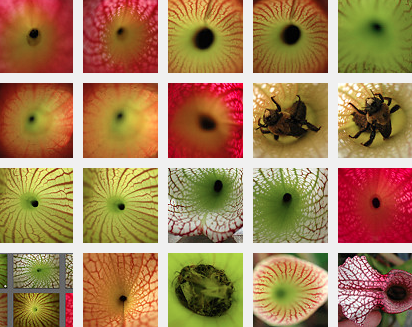 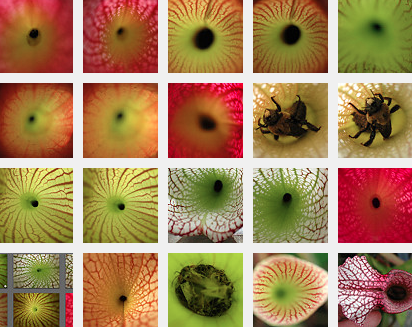 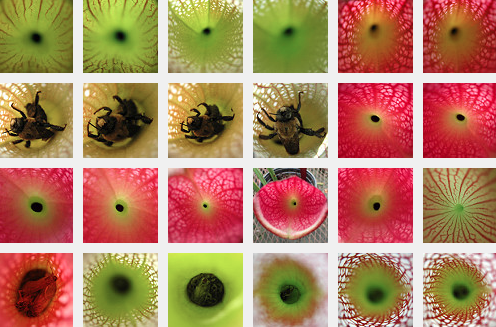 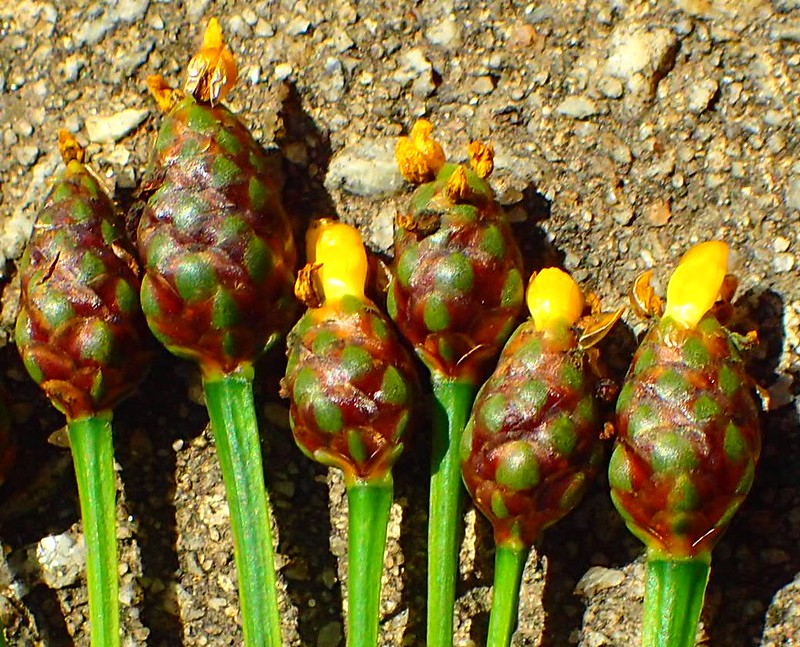 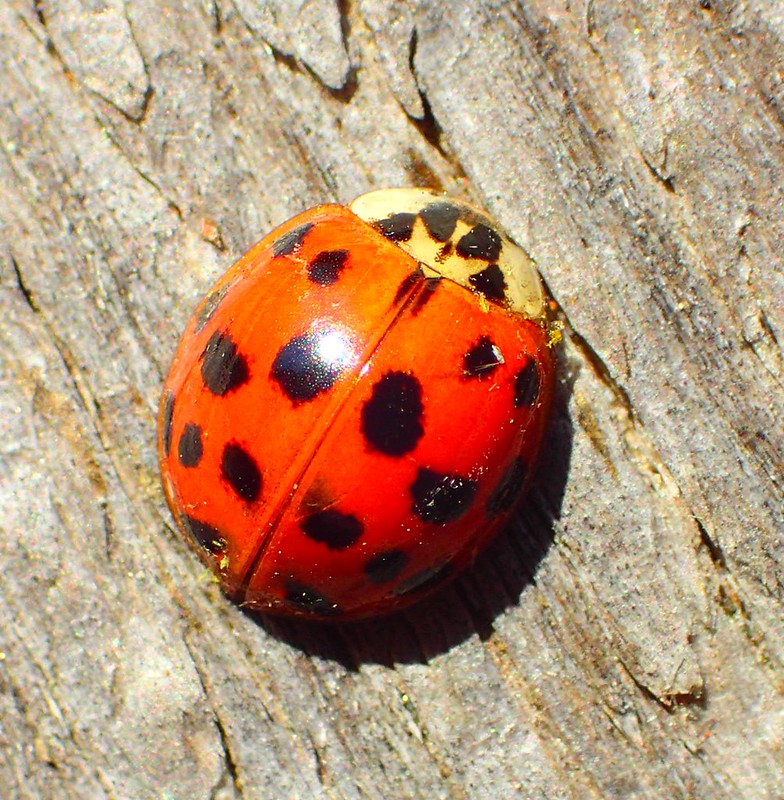 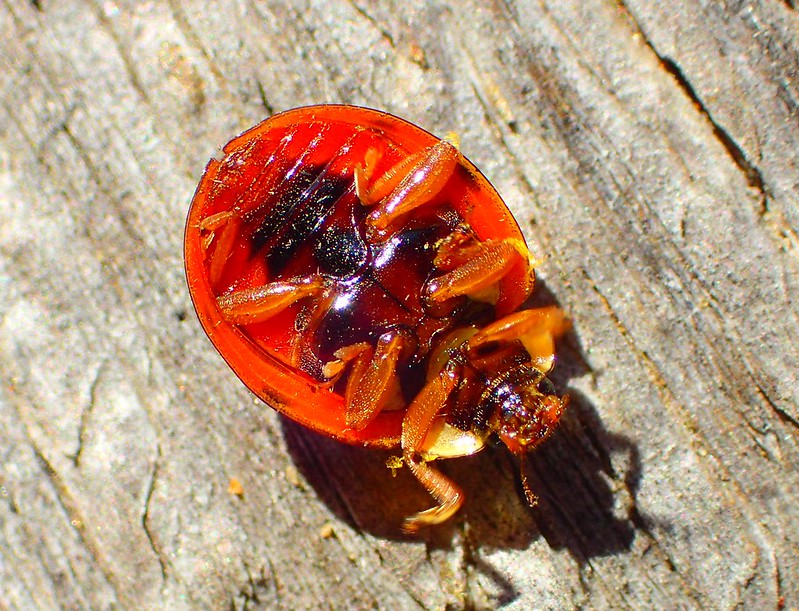 Katydid wasp, aka Great Black Wasp 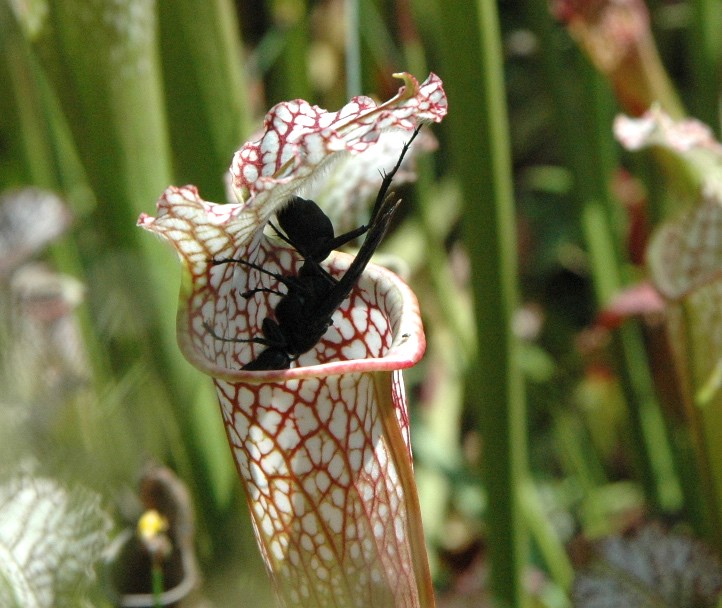 McMurtry the Olive 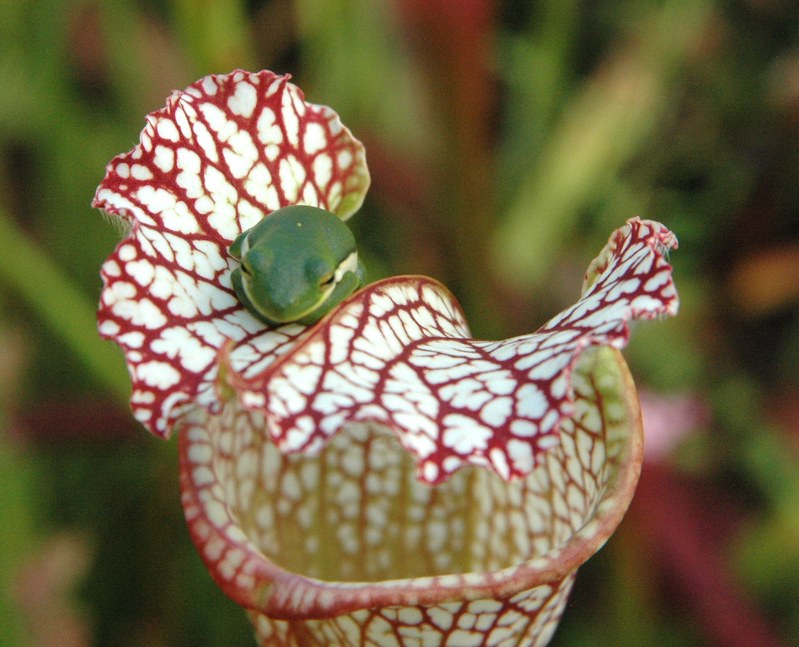 Mud Dobber's on the wasp eating S. Alata 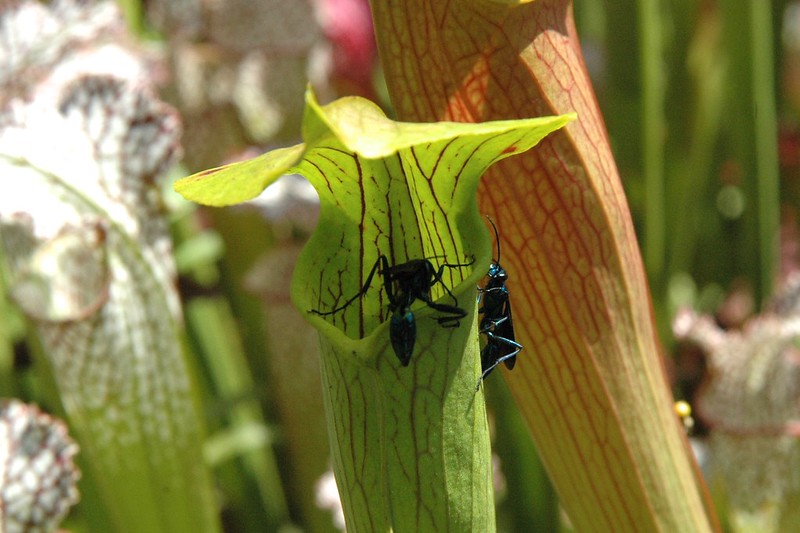 |
|
|
|
Post by coloradocliff on Sept 3, 2017 16:59:09 GMT -5
Must be what the early mammals felt like before the end of the cretaceous and the end of the dinosaurs.
Not easy for a little pink, almost hairless creature with no apparent defense except for that bigger brain they developed.
Pretty good world for them after a few hundred of years and the atmosphere cleared.
|
|
|
|
Post by coloradocliff on Sept 3, 2017 17:01:12 GMT -5
Your "collage of the insectivorous plants would make cool wall paper. Jim..
|
|
jamesp
Cave Dweller 
Member since October 2012
Posts: 36,607
|
Post by jamesp on Sept 3, 2017 17:27:44 GMT -5
Your "collage of the insectivorous plants would make cool wall paper. Jim.. Aware you like flowers. The sarracenias make a decent flesh show, blooms not bad either. It would not take long to do a whole bunch of those photos. They can be done nondestructive, and 3 different shades early mid and late season. Then shade, full sun, greenhoused, open air, etc make many shades. Habitat makes them tricky to ID. Almost requires watching the plant for several years in different habitats to do I.D. no guarantee any of them are totally pure, they are totally promiscuous. Like coral. Water depth, temp, clarity, chemical composition and a hundred other things make it difficult to do taxonomy. Quite a few aquatic plants that cross fast. Pickerel weed(peltandra) is one of the worst. Had to destroy the crop every 3 years and go collect 'pure' from a isolated region. |
|
jamesp
Cave Dweller 
Member since October 2012
Posts: 36,607
|
Post by jamesp on Sept 3, 2017 17:39:28 GMT -5
Must be what the early mammals felt like before the end of the cretaceous and the end of the dinosaurs. Not easy for a little pink, almost hairless creature with no apparent defense except for that bigger brain they developed. Pretty good world for them after a few hundred of years and the atmosphere cleared. Doubt you or I want to go back to Jurassic park. Lizards are dead accurate predators. Can't imagine a 50 footer. or one our size that could run 80 MPH. |
|
jamesp
Cave Dweller 
Member since October 2012
Posts: 36,607
|
Post by jamesp on Sept 3, 2017 17:51:37 GMT -5
|
|
|
|
Post by coloradocliff on Sept 3, 2017 17:54:27 GMT -5
Your "collage of the insectivorous plants would make cool wall paper. Jim.. Aware you like flowers. The sarracenias make a decent flesh show, blooms not bad either. It would not take long to do a whole bunch of those photos. They can be done nondestructive, and 3 different shades early mid and late season. Then shade, full sun, greenhoused, open air, etc make many shades. Habitat makes them tricky to ID. Almost requires watching the plant for several years in different habitats to do I.D. no guarantee any of them are totally pure, they are totally promiscuous. Like coral. Water depth, temp, clarity, chemical composition and a hundred other things make it difficult to do taxonomy. Quite a few aquatic plants that cross fast. Pickerel weed(peltandra) is one of the worst. Had to destroy the crop every 3 years and go collect 'pure' from a isolated region. Pickerel weed?? pickerel weed?? Isn't that one of the really invasive water plants like water hyacinth? Ignorant look... Bet that that sucker is a survivor species noting the fast modifications that it uses to advance its dominance over the aquatic plants. Today, it owns the lake. Mutates to not only survive, not just to thrive but to impose it's dominance on the other species on our planet. Tomorrow the great oceans of the planet,, then whipping up on the redwoods on land.. then onto the pink, almost hairless mammals. Looking at Jim... notice he's looking at me.. grin... Those tropical water lilies sound so cool. They will over winter in boxes in a protected greenhouse for the winter? Will they naturalize in that climate zone?
|
|
jamesp
Cave Dweller 
Member since October 2012
Posts: 36,607
|
Post by jamesp on Sept 4, 2017 6:06:13 GMT -5
Aware you like flowers. The sarracenias make a decent flesh show, blooms not bad either. It would not take long to do a whole bunch of those photos. They can be done nondestructive, and 3 different shades early mid and late season. Then shade, full sun, greenhoused, open air, etc make many shades. Habitat makes them tricky to ID. Almost requires watching the plant for several years in different habitats to do I.D. no guarantee any of them are totally pure, they are totally promiscuous. Like coral. Water depth, temp, clarity, chemical composition and a hundred other things make it difficult to do taxonomy. Quite a few aquatic plants that cross fast. Pickerel weed(peltandra) is one of the worst. Had to destroy the crop every 3 years and go collect 'pure' from a isolated region. Pickerel weed?? pickerel weed?? Isn't that one of the really invasive water plants like water hyacinth? Ignorant look... Bet that that sucker is a survivor species noting the fast modifications that it uses to advance its dominance over the aquatic plants. Today, it owns the lake. Mutates to not only survive, not just to thrive but to impose it's dominance on the other species on our planet. Tomorrow the great oceans of the planet,, then whipping up on the redwoods on land.. then onto the pink, almost hairless mammals. Looking at Jim... notice he's looking at me.. grin... Those tropical water lilies sound so cool. They will over winter in boxes in a protected greenhouse for the winter? Will they naturalize in that climate zone?
Sorry, meant Pontederia, not peltandra. so pickerel(pontederia) comes in a narrow leaf and a wide leaf. shades of lavender and white blooms. seeds readily, grows fast well, don't trust the seedlings. The fist time a seed comes up it has a high probability of not being the same as the mother plant. basic characteristics-wide leaf/narrow leaf, white to deep purple bloom, those basic characteristics are altered. Both structural shape and bloom color so propagative division from mother plant is necessary Same is true for Louisiana Iris and the carnivorous pitcher plants: alata, flava, leachaphyla, rubra, purpurea to name a few pitcher plants that have territories in SE US that overlap. Crossing occurs. Making like 100 natural hybrids. Then add man mades. Nelsonii, Fulva, Hexagonia, Gigantacurulea, Brevicallis are variations of Louisiana Iris growing in various tributaries of Louisiana mostly, and other SE US states have naturally crossed. Making more NATURALLY HYBRIDIZED colors of blooms than any other plant on earth. Then again, add man made hybrids. That is a big claim to fame- an Iris basically in the state of only Louisiana naturally hybridizing to so many colors. Then there is tropical water lilies. They too are easily crossed. The difference with them is they cross with variations all over the world. Bloom color, shape and size much more diverse and exotic. If you want to play with an aquatic plant do tropical lilies. But you have to have fairly warm water year round. Like a 8' X 16' heated container would hold more propagation stock than you could sell in 5 states if you are organized. They can reproduce by seed, by pots full of little wooded balls like potatoes, viviparously out of leaf or bloom. the varieties that i have are the ones that survive in a container a bit dug into the ground.(we discussed your ground warmth vs. tables). A tropical lily can grow from the tiniest seedling to a robust blooming plant in 2 months given warm water. Many varieties will die in the winter of Miami, many survive winter of Georgia. But a cold winter in Georgia can kill some of the hardy varieties. Not noted for much temperature naturalization. I just brought in like 40 varieties from Thailand and let them make the winter. Ended up with a dozen that do Georgia winters. Basically they are a weed. Florida and Texas has fought to eradicate them and ban them. Next year when Colorado gets warm let me know. I can send you tubers in a SFRB/envelope that will plant several hundred pots. They like clay. |
|
|
|
Post by coloradocliff on Sept 4, 2017 9:19:18 GMT -5
  
Might have to be a bit more cold hardy for a tropical lily to make it here... brr winters. that why I like Florida and Mexico after October till April.. brrr.
Here's a site that you must have been to. Stopped there many times over the years.
oregonstateparks.org/index.cfm?do=parkPage.dsp_parkPage&parkId=81
Are you going tp sell tropical lilies online now? might be a really good market for a guy who know what he's doing and is an efficient producer. Give you something interesting to do also.
The first lily picture is on a mountain lake at 10,000 ft elevation. Only other water plants to speak of that high are water hyacinths. The other two pictures are from a private pond at 6,000 ft. All are winter hardy and must have good genes for cold hardy. Another one grows on the nursery property down by the river in a large pond below the main lake. Yellow flower, common weed down there I am sure. Duck weed common name??
|
|
rockdunker
noticing nice landscape pebbles
 
Member since July 2017
Posts: 97 
|
Post by rockdunker on Sept 4, 2017 10:07:55 GMT -5
Got your cookout all planned Cliff ? Heck no Boys.. No cookout for me.. Maybe rockdunker will save us a wiener. Heard he was having Asian wieners today.. I'm eating salad.. shudder...
LMAO, I may identify as a hotdog eater at times. Doesn't mean I have to do that all of the time. Those are cool weenie roasters. I'd get one but it might give the wife some bad ideas. |
|
rockdunker
noticing nice landscape pebbles
 
Member since July 2017
Posts: 97 
|
Post by rockdunker on Sept 4, 2017 10:47:41 GMT -5
Might have to be a bit more cold hardy for a tropical lily to make it here... brr winters. that why I like Florida and Mexico after October till April.. brrr.
Here's a site that you must have been to. Stopped there many times over the years.
oregonstateparks.org/index.cfm?do=parkPage.dsp_parkPage&parkId=81
Are you going tp sell tropical lilies online now? might be a really good market for a guy who know what he's doing and is an efficient producer. Give you something interesting to do also.
The first lily picture is on a mountain lake at 10,000 ft elevation. Only other water plants to speak of that high are water hyacinths. The other two pictures are from a private pond at 6,000 ft. All are winter hardy and must have good genes for cold hardy. Another one grows on the nursery property down by the river in a large pond below the main lake. Yellow flower, common weed down there I am sure. Duck weed common name??
Well that's my favorite Colorado weed. It sure makes good habitat for large mouth bass. They sure do like that topwater frog twitched through there. |
|
|
|
Post by coloradocliff on Sept 4, 2017 10:55:49 GMT -5
Might have to be a bit more cold hardy for a tropical lily to make it here... brr winters. that why I like Florida and Mexico after October till April.. brrr.
Here's a site that you must have been to. Stopped there many times over the years.
oregonstateparks.org/index.cfm?do=parkPage.dsp_parkPage&parkId=81
Are you going tp sell tropical lilies online now? might be a really good market for a guy who know what he's doing and is an efficient producer. Give you something interesting to do also.
The first lily picture is on a mountain lake at 10,000 ft elevation. Only other water plants to speak of that high are water hyacinths. The other two pictures are from a private pond at 6,000 ft. All are winter hardy and must have good genes for cold hardy. Another one grows on the nursery property down by the river in a large pond below the main lake. Yellow flower, common weed down there I am sure. Duck weed common name??
Well that's my favorite Colorado weed. It sure makes good habitat for large mouth bass. They sure do like that topwater frog twitched through there. You see that big lake as you get ontop the Grand Mesa from the Mesa side? On your right and down in a draw. No bass there but bet it is pretty about now, Water lily infested for sure.
|
|
jamesp
Cave Dweller 
Member since October 2012
Posts: 36,607
|
Post by jamesp on Sept 4, 2017 19:53:14 GMT -5
View AttachmentView AttachmentView Attachment
Might have to be a bit more cold hardy for a tropical lily to make it here... brr winters. that why I like Florida and Mexico after October till April.. brrr.
Here's a site that you must have been to. Stopped there many times over the years.
oregonstateparks.org/index.cfm?do=parkPage.dsp_parkPage&parkId=81
Are you going tp sell tropical lilies online now? might be a really good market for a guy who know what he's doing and is an efficient producer. Give you something interesting to do also.
The first lily picture is on a mountain lake at 10,000 ft elevation. Only other water plants to speak of that high are water hyacinths. The other two pictures are from a private pond at 6,000 ft. All are winter hardy and must have good genes for cold hardy. Another one grows on the nursery property down by the river in a large pond below the main lake. Yellow flower, common weed down there I am sure. Duck weed common name??
The white lily is the native American water lily Nymphea Odorata. Totally hardy. the yellow lily is likely Nuphar, a favorite moose food in Canada. Both of those grow nation wide. Both have many mutations. the Nuphar is in fossils, primitive plant. Goes way back. Florida and Texas are big growers of tropical lilies. Canada is one of their biggest customers, as an annual. Because they are super fast maturing to flowering age they are popular annuals in the great white north. Nuphar's  Nuphar's in same boat, they don't know if there is 8 or 70 species. Water plants are very promiscuous, gene pool is totally criss crossed beyond botanist's capability to say what the original plant is. If there was a single species, or 5 originals, or 20 originals. I found a stand of water Iris(Viginica) 8-9 feet tall in Jasper Florida, and that's not correct. I believe they are doing DNA. "The number of species in the genus is still under review.[3][5] Until the mid-20th century, some botanists treated the genus as just a single variable species (for which the European name N. lutea has priority),[6][7] while some other authorities accepted about a dozen more species on the basis of traditional taxonomic standards.[4] Recent molecular work has shown that there are substantial differences between the Eurasian species (sect. Nuphar) and American species (sect. Astylus), except for North American N. microphylla which is clusters with the Eurasian species.[4][8] Molecular taxonomy has shown conclusively that recognition of so few species is out of the question, and forced an increased number of recognised species; some sources list about seventy.[3] The Kew Gardens plant list includes over twenty accepted species, subspecies and varieties; it also has a similar number as yet unresolved, together with over twenty synonyms.[5]" |
|
|
|
Post by coloradocliff on Sept 4, 2017 20:27:26 GMT -5
Might have to be a bit more cold hardy for a tropical lily to make it here... brr winters. that why I like Florida and Mexico after October till April.. brrr.
Here's a site that you must have been to. Stopped there many times over the years.
oregonstateparks.org/index.cfm?do=parkPage.dsp_parkPage&parkId=81
Are you going tp sell tropical lilies online now? might be a really good market for a guy who know what he's doing and is an efficient producer. Give you something interesting to do also.
The first lily picture is on a mountain lake at 10,000 ft elevation. Only other water plants to speak of that high are water hyacinths. The other two pictures are from a private pond at 6,000 ft. All are winter hardy and must have good genes for cold hardy. Another one grows on the nursery property down by the river in a large pond below the main lake. Yellow flower, common weed down there I am sure. Duck weed common name??
The white lily is the native American water lily Nymphea Odorata. Totally hardy. the yellow lily is likely Nuphar, a favorite moose food in Canada. Both of those grow nation wide. Both have many mutations. the Nuphar is in fossils, primitive plant. Goes way back. Florida and Texas are big growers of tropical lilies. Canada is one of their biggest customers, as an annual. Because they are super fast maturing to flowering age they are popular annuals in the great white north. Nuphar's  Nuphar's in same boat, they don't know if there is 8 or 70 species. Water plants are very promiscuous, gene pool is totally criss crossed beyond botanist's capability to say what the original plant is. If there was a single species, or 5 originals, or 20 originals. I found a stand of water Iris(Viginica) 8-9 feet tall in Jasper Florida, and that's not correct. I believe they are doing DNA. "The number of species in the genus is still under review.[3][5] Until the mid-20th century, some botanists treated the genus as just a single variable species (for which the European name N. lutea has priority),[6][7] while some other authorities accepted about a dozen more species on the basis of traditional taxonomic standards.[4] Recent molecular work has shown that there are substantial differences between the Eurasian species (sect. Nuphar) and American species (sect. Astylus), except for North American N. microphylla which is clusters with the Eurasian species.[4][8] Molecular taxonomy has shown conclusively that recognition of so few species is out of the question, and forced an increased number of recognised species; some sources list about seventy.[3] The Kew Gardens plant list includes over twenty accepted species, subspecies and varieties; it also has a similar number as yet unresolved, together with over twenty synonyms.[5]" Yep That one with the yellah flower is the hardiest one. Kind of pretty and surely planted by some water fowl. Also the water is super clear and clean. Full of leeches, water boatmen, skippers etc. Be a great place to practice your camera skill... hint.. |
|
|
|
Post by txrockhunter on Sept 5, 2017 15:14:24 GMT -5
When you get down on that level and look around, you can spot a lot of action. Jeremy txrockhunter spends hours on his belly, camera at the ready and has the portfolio to prove it. James laying in the pond, water lilly ghillie suit...ambush style. I think Jeremy should make himself a container pond, all it takes is like a 100/200 gallon Rubbermaid cattle water container. No need to buy a Rubbermaid container, with half of Houston under water....... I'm sure there will be some interesting remnants when the waters recede! I haven't tried the water macro, yet, but there are some amazing life forms in there! Great photo ops! Love the water spider and the Damselfly about to have his butt chewed! |
|
|
|
Post by txrockhunter on Sept 5, 2017 15:54:34 GMT -5
Well, that's a small water spider soon to be large. Is the shedding process due to growth ? I must have caught the buggar in the act. Pants down lol. Why don't we get knew skin ? Yeah, their shell is rigid so when they mature and the shell is full, they moult and stretch bigger. Lather rinse repeat until adult. Even adults moult once ahead or so. We are getting new skin all the time. Shedding skin cells continuously "dander". The hard part is when we drop a bunch of body fat the skin doesn't shrink so well. Please don't ask me how I know. Ughhh
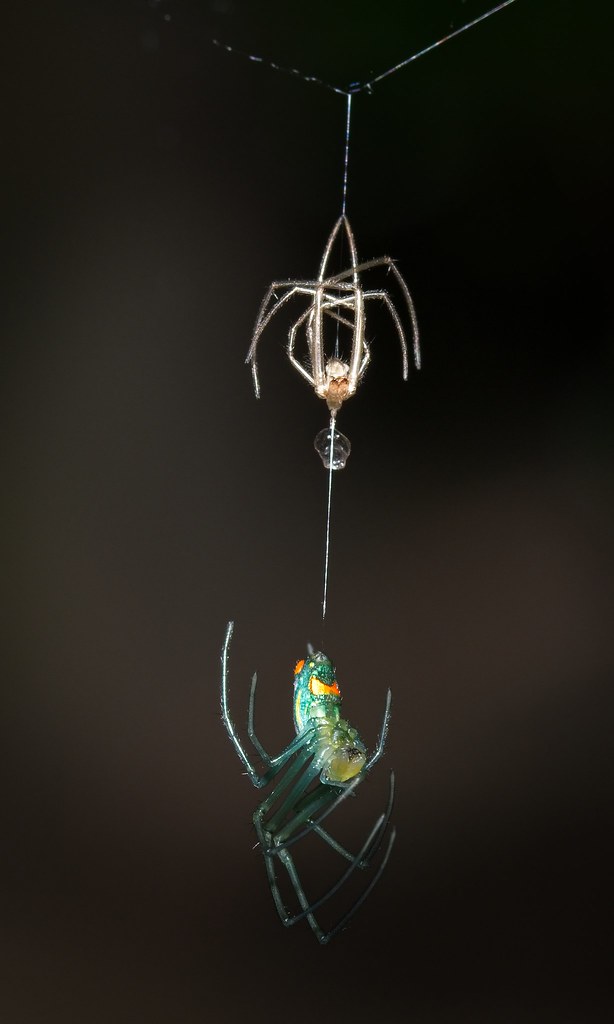 |
|
Deleted
Deleted Member
Member since January 1970
Posts: 0
|
Post by Deleted on Sept 5, 2017 17:58:14 GMT -5
Jeremy, i have decided to give my photo gear to charity.
That image boggles the mind. all the things that have to go right to capture it. I could wait 10 lifetimes.......
|
|
jamesp
Cave Dweller 
Member since October 2012
Posts: 36,607
|
Post by jamesp on Sept 5, 2017 20:22:15 GMT -5
Jeremy, i have decided to give my photo gear to charity. That image boggles the mind. all the things that have to go right to capture it. I could wait 10 lifetimes....... NOT going against Jeremy in a photo contest. Bet his wife is getting on to him for dirty clothes from laying on ground. It's addictive using the micro world of nature for subjects. Fun part is loading them to the computer and blowing up the shots. Man the wind has been giving me fits. I noticed the stacked focus does not seem to be so accentuated when shooting it in super bright sun. Obviously a deeper depth of field with very small aperture without stacking. Makes sense. There is a void shooting with a P&S though. Nothing like the shear clarity the DSLR creates. Looking forward to more of your photos. |
|